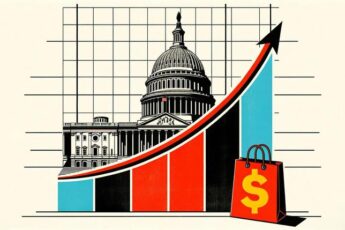In a welcome turn of events, consumer price inflation in the United States took a positive dip, falling to 3.2% last month. While the bad news persists – prices are still on the rise – the good news is that they’re doing so at a rate not witnessed in the past two years. This shift carries implications for both American households and the Federal Reserve, offering a glimmer of hope in the face of ongoing economic concerns.
Understanding the Numbers:
The recent drop in consumer price inflation marks a noteworthy change in the economic landscape. With a decrease to 3.2%, the rate of price increases has slowed, providing some relief for consumers who have been grappling with the impacts of inflation. It’s essential to delve into the reasons behind this shift and explore the potential consequences for households and the broader economy.
Factors Influencing the Decline:
Several factors contribute to the deceleration in consumer price inflation. Central to this trend is a more stabilized global economic environment, with supply chain disruptions easing and production capacities gradually recovering. Additionally, strategic policy measures by the Federal Reserve aimed at managing inflation expectations have played a crucial role in mitigating the upward trajectory of prices.
Impact on US Households:
For American households, the decline in consumer price inflation offers a welcome respite from the escalating cost of living. As prices rise at a slower pace, families may find some relief in their day-to-day expenses. This reprieve could translate into increased purchasing power, allowing consumers to allocate resources more efficiently and potentially stimulate economic growth.
Federal Reserve’s Response:
The Federal Reserve has been closely monitoring inflation dynamics, aiming to strike a delicate balance between promoting economic growth and maintaining price stability. The recent drop in consumer price inflation aligns with the Fed’s objectives, providing validation for its measured approach to monetary policy. The central bank will likely continue to assess the situation, adjusting policies as needed to sustain a healthy economic environment.
Caution Amid Optimism:
While the recent decline in consumer price inflation is indeed positive news, caution remains warranted. Economic conditions are dynamic, and unforeseen events could influence inflation trends in the future. As such, policymakers and consumers alike should approach this development with a sense of vigilance, recognizing the potential for fluctuations in the months ahead.
Conclusion:
In conclusion, the recent drop in consumer price inflation to 3.2% brings a ray of hope for US households and aligns with the Federal Reserve’s efforts to manage inflation. The tempered rate of price increases offers relief to consumers, fostering a more stable economic environment. However, it’s crucial to remain vigilant and adaptable in the face of evolving economic conditions, recognizing that the road ahead may still hold challenges and uncertainties.






